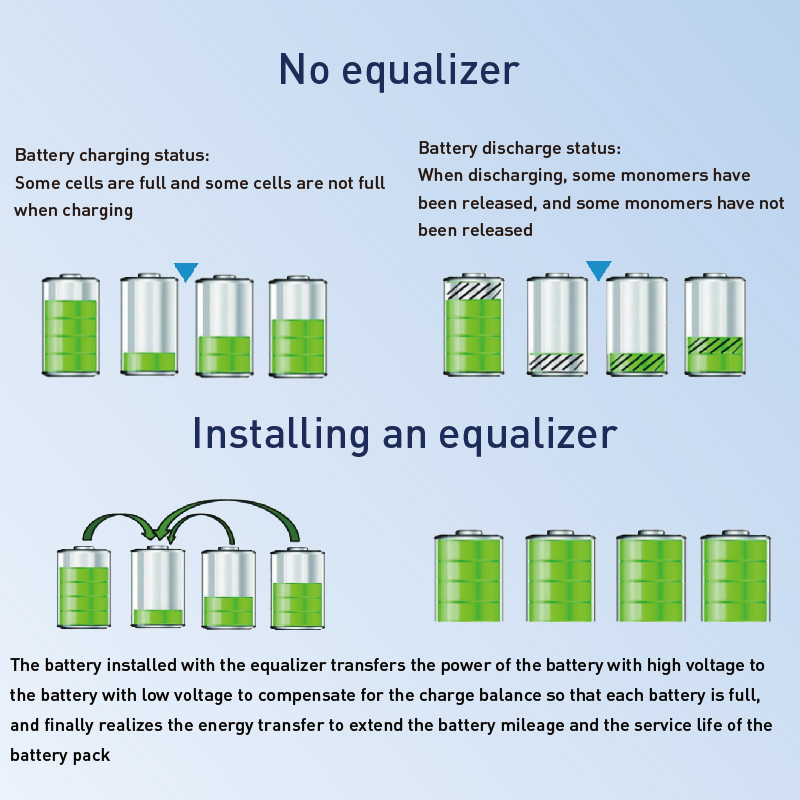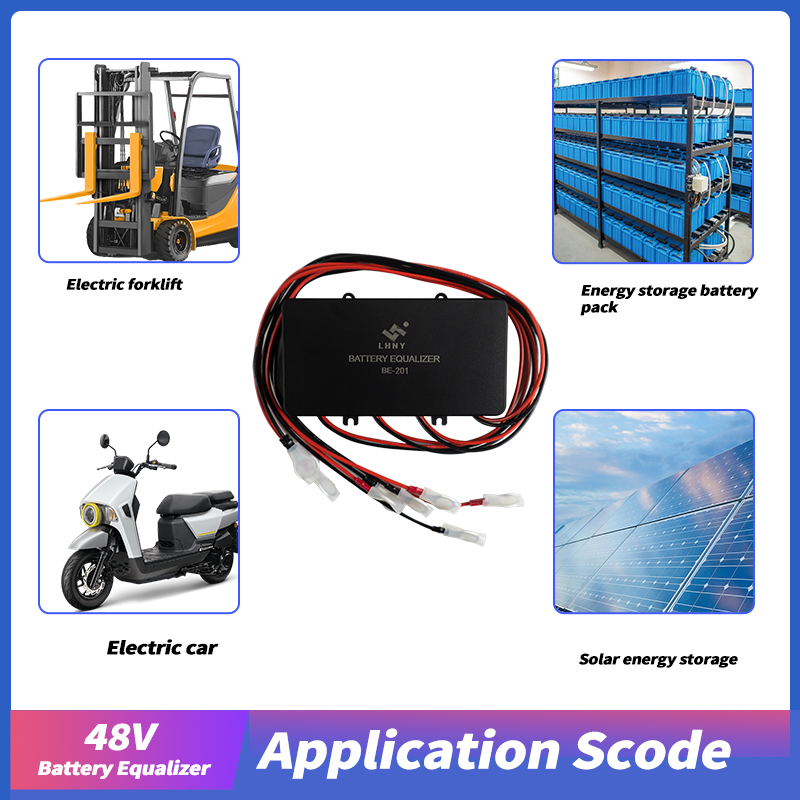As we all know, the battery is the core component of the electric vehicle, but there is an imbalance in the battery pack, so it is necessary to balance the battery. Battery balance time depends on the use of the battery, generally 1-2 hours can be fast, slow dozens of hours also have.
The so-called battery balance is actually the differential current used by different cells in the battery pack, and the battery is balanced during use to meet the activation charging of the cell, so that the cell capacity is maximized, so as to ensure that the energy of each battery unit is available.
Simple understanding, we all know that the new energy vehicle power battery pack is composed of a number of small cells, after the battery has been used for a long time, some small cells may have a performance decline, resulting in the voltage deviation of a single small battery, and battery balancing is to charge these single small batteries separately, so that its voltage and the whole battery pack battery balance. Get the car back to its best range.
Battery equalization method and process
At present, there are mainly two kinds of battery balancing methods: active balancing and passive balancing. Here are two kinds of battery balancing processes.
1. Passive equilibrium
Passive equalization is actually to add a resistance load to the battery, which is when the system detects that the voltage of a battery is too high, it will turn on the load resistance, let the battery discharge to the resistance, consume battery energy, and finally let all batteries achieve a consistent method.
The cost of passive equalization is low and the connection is convenient, as long as a resistor is connected in the battery, but this will also lead to the energy being consumed in vain, and the heat generated by the discharge of the resistance will also affect the service life of the battery.

2. Active balance
Active balance is a form developed on thebasis of passive balance, that is, a battery with a high voltage in the battery pack transfers its power to a battery with a lower power through energy conversion, which can also avoid the energy loss caused by passive balance.

Battery equalizer, also known as battery balancer, is an electronic protection device that prevents the voltage imbalance between battery cells inside the battery from reducing the service life. When the voltage imbalance between battery cells, different battery cells charge and discharge speed is different, a battery cell is charged at the same time, other battery cells are in the state of overcharge or undercharge, and overcharge or undercharge will damage the battery, resulting in reduced battery capacity and shortened life. The battery equalizer can ensure the power balance between battery cells in real time, thereby extending the battery life by 5-30%.
The battery equalizer is an energy transfer equalizer that compensates both sides of the battery. When the voltage difference between the batteries connected in series exceeds 10 millivolts, the battery equalizer starts to work, and the current flows from the battery with higher voltage to the battery with lower voltage, and finally the battery reaches balance. It can be connected in a series connected battery for a long time to automatically maintain the balance of the battery without maintenance.
The above describes two methods of battery balancing. During the manufacturing process, factors such as processing, materials, and detachment of active materials from the plates can cause voltage discrepancies among batteries in a battery pack over time. Prolonged use with imbalanced voltages can negatively impact battery life and effective capacity. Therefore, it is necessary to balance the batteries in order to ensure optimal performance and longevity of the battery pack.
